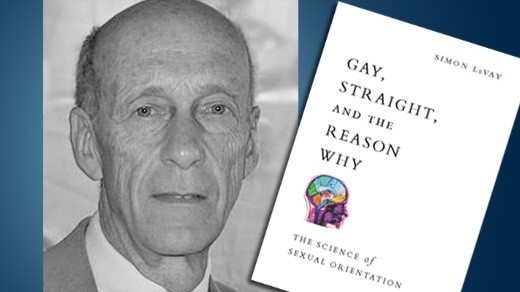Senior Editor
with reporting by
JOHN ARNOLD ’14
Contributing Writer
Simon LeVay, author of Gay, Straight, and the Reason Why, was the speaker at Thursday’s Common Hour entitled‚ “The Science of Sexual Orientation.”
The event, hosted by the women’s and gender studies program, the Lesbian, Gay, Bisexual, Transgender Alliance (LGBTA), and Brooks College House, addressed the topic of sexual orientation from a scientific perspective.
LeVay argued sexual orientation is the result of genetic factors as opposed to nurturing in early childhood or choice. To back this claim, he cited numerous case studies done with animals that also engage in same-sex relationships.
The reason for basing many of his case studies on animals is the fact that animals engage in sexual conduct for the purpose of procreation as opposed to humans who engage in sex for pleasure as well. In these cases he found that humans are not the only creatures that have same-sex relationships. but that it was a common occurrence in the animal kingdom.
LeVay also used studies in human genetics and cognitive differences to further support his claim of sexual orientation being based on biology.
Studies on siblings have shown that there is a correlation between the sexual orientation of one sibling and the orientation of the other. For example, a man with a homosexual brother has a 22 percent higher chance of also being homosexual himself, and the numbers are even higher for identical twins. If one of the twins is homosexual, there is a 50 percent chance the other twin will also be homosexual. Information presented suggested a deeper level of cognitive difference that coincides with the same-sex attraction.
“Gay men tend to report that they had less interest in rough-and-tumble sports than other boys,” Levay said. “A prospective study showed that boys who are very strongly gender-nonconformist have a high likelihood of developing into gay or bisexual adults.”
To close his argument, LeVay pointed out the striking differences in cognitive function and performance. Studies show that homosexual men perform worse than their heterosexual counterparts in visuo-spatial tasks, such as mental rotation and targeting, but were far better in terms of verbal tasks.
The discussion ended with LeVay suggesting a hormonal imbalance in the womb during prenatal development as the cause to the biological differences that determine sexual orientation.
Overall, the Common Hour provided an interesting perspective on a topic that has continued to spark debate. It is not often (from my perspective) that issues such as sexual orientation are viewed from a scientific perspective. It is far more common for one side of the debate on the genesis of sexual orientation or the other to be up-in-arms over ideological differences without any real evidence for either case. It is refreshing to see evidence of some kind brought forward for the entire campus community and to see issues that normally involve deep emotional tensions parsed out in a logical fashion.
justin.kozloski@fandm.edu
john.arnold@fandm.edu
